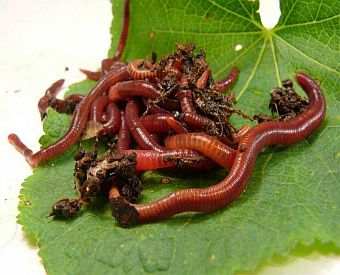Efficient red wigglers: Ideal for reducing waste
Efficient red wigglers: Ideal for reducing waste
Blog Article
Change Your Garden With Red Wigglers: Idea
By establishing a basic worm container and recognizing the nutritional demands of these amazing animals, gardeners can considerably boost soil top quality and plant health and wellness. The procedure of converting natural waste into abundant, abundant castings is both uncomplicated and gratifying.

Advantages of Red Wigglers
Red wigglers, clinically recognized as Eisenia fetida, are usually hailed as nature's composting champs. These remarkable worms serve several key benefits that can dramatically boost garden health and efficiency.

An additional noteworthy advantage of red wigglers is their ability to reduce waste. By composting natural products that would otherwise add to garbage dump waste, they play a vital role in sustainable gardening practices. Incorporating these worms into your gardening regimen can lead to increased returns, much healthier plants, and a much more dynamic garden atmosphere, making them indispensable allies for gardeners looking for to enhance their eco-friendly footprint.
Establishing a Worm Bin
Developing a worm bin is a crucial step for anyone seeking to harness the advantages of red wigglers in their horticulture initiatives. An ideal worm bin can be made from numerous materials, consisting of plastic containers, wooden pet crates, or readily available worm containers. The initial consideration is dimension; a container that is at least 2 feet wide, 3 feet long, and 1 foot deep is typically perfect for a small to medium number of worms.
Following, make sure correct drain and air flow. Drill openings in the base for excess dampness to get away and in the sides for airflow. It's essential to produce a bedding layer, making use of products such as shredded paper, cardboard, or coconut coir to offer a comfortable environment for the worms. The bed linens needs to be moist yet not soggy, looking like a wet sponge.
Place the bin in a place that keeps a regular temperature, ideally in between 55 ° F and 77 ° F. Avoid direct sunshine or extreme chilly, as these conditions can damage the worms. When the bin is established up, permit the bed linens to choose a few days prior to introducing the red wigglers, guaranteeing they have a successful setting in which to grow.
Feeding Your Red Wigglers
As soon as the worm container is developed and the red wigglers are presented, correct feeding comes to be crucial to keeping a healthy and balanced worm populace. Red wigglers grow on a diverse diet regimen, primarily consisting of kitchen area scraps and organic products.
When introducing food, slice the scraps into smaller sized pieces to facilitate red wiggler farming quicker usage. In addition, hide the food below a layer of bed linens product to stop fruit flies and other annoyances. Monitor the feeding regularity; a basic policy is to supply food every 1-2 weeks, relying on the variety of worms and the amount of food waste generated.

Harvesting Worm Castings
How can you inform when it's time to harvest worm spreadings from your container? The preparedness of worm spreadings is indicated by a few essential indicators. The material in the container need to show up dark, brittle, and abundant in structure, appearing like a fine dirt. Furthermore, the initial food scraps must be considerably broken down or almost unrecognizable, showing that the worms have actually successfully refined them.
An additional sign is the reduction in worm task; as the spreadings accumulate, worms tend to migrate in the direction of fresher food sources. If you discover a decrease in worm movement and the visibility of castings at the bottom of the container, it's a clear signal that harvesting is due.
To collect, delicately dig the castings, making sure to reduce disturbance to the worms. A popular method involves dividing the spreadings making use of light; worms have a tendency to tunnel away from the light, permitting you to accumulate the spreadings extra easily.
Collecting on a regular basis, around every three to six months, makes certain a constant supply of this nutrient-rich modification for your gardening undertakings. Keep in mind, the top quality of your castings straight affects the health of your plants.
Utilizing Spreadings in Your Yard
(red worms for sale)Making use of worm spreadings in your yard can dramatically enhance soil health and plant development - red worms. These nutrient-rich organic plant foods give crucial macro and micronutrients, enhancing the overall fertility of your soil. By integrating worm castings into your yard beds, you can promote helpful microbial task, which helps in vitamins and mineral availability and boosts dirt framework
To use worm castings efficiently, blend them right into the leading couple of inches of soil prior to planting. You can develop a nutrient-dense liquid plant food by soaking worm spreadings in water for a week, then using the resulting "worm tea" directly to your plants.
Worm castings likewise boost dampness retention within the soil, minimizing the requirement for frequent watering. Their natural pH balance makes them appropriate for different plant types, from vegetables to ornamentals. Regularly integrating worm spreadings right into your horticulture regimen can bring about robust plant development, boosted returns, and a total healthier yard ecological community. Embrace the benefits of worm castings for a flourishing and sustainable garden.
Conclusion
By establishing a worm container, supplying ideal food, and routinely collecting nutrient-rich spreadings, gardeners can promote a sustainable environment. The use of worm spreadings and "worm tea" even more adds to moisture retention and nutrient accessibility in the dirt.
Report this page